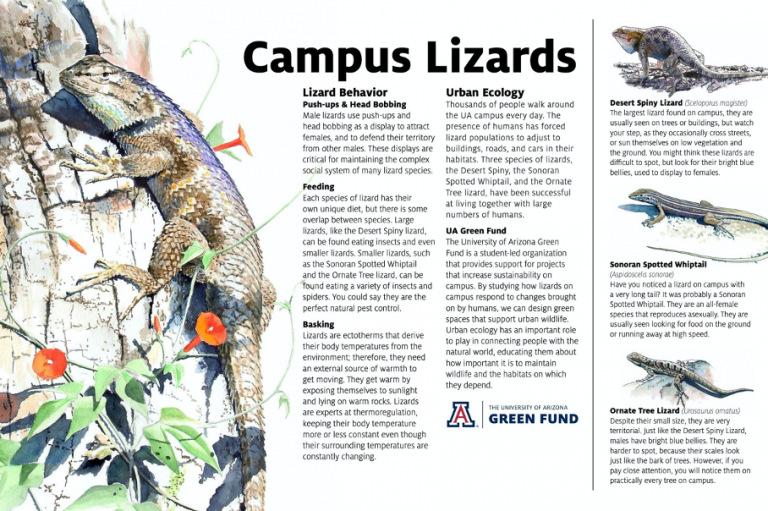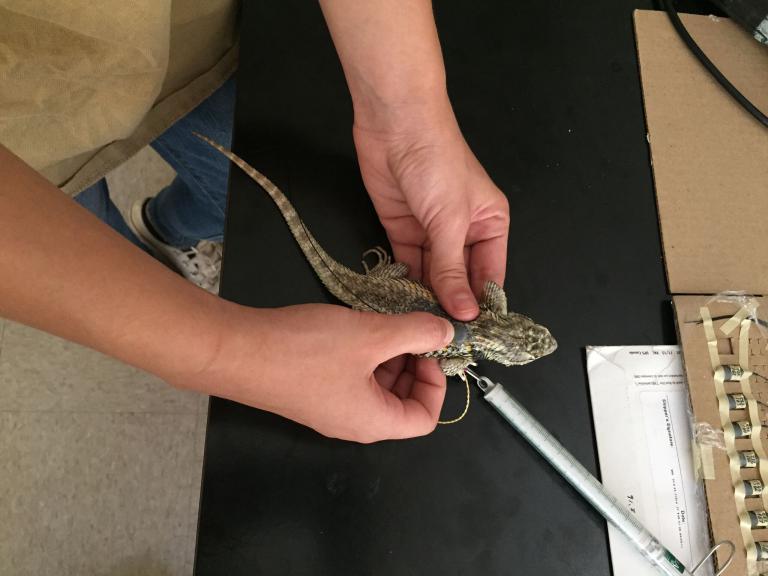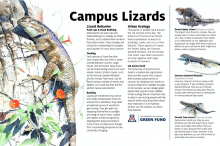Lizard Urban Ecology Project

What Are We Studying?

Methods
Capturing and Marking Lizards
We captured all lizards using a telescoping fishing pole with a noose at the end. For each lizard captured, we recorded behavior, substrate, microhabitat, nearest cover and the distance to it. We recorded environmental data, such as temperature, humidity, and wind speed using a weather kestrel meter. Then, we used a GPS to obtain UTM coordinates for each location of capture. When necessary, we placed lizards in cloth bags or coolers, and transported them to our lab for processing.
Processing included determining sex and age class, taking body measurements (e.g., snout-vent length, mass, tail length), and marking individuals. Desert Spiny Lizards (Sceloporus magister) and Sonoran Spotted Whiptails (Aspidoscelis sonorae) were permanently marked by implanting a PIT tag (passive integrated transponder) subcutaneously. Ornate Tree Lizards (Urosaurus ornatus), which were too small for a PIT tag, were temporarily marked with a painted number on their backs.
Mark-Recapture Surveys
Mark-recapture surveys were used to estimate the population size and relative abundance of the three lizard species found on The University of Arizona campus. We conducted mark-recapture surveys at four plots located on campus in summer 2017 and two different plots on campus in summer 2018. During each four-hour mark-recapture survey, we captured all lizards observed in a given plot, marked and processed them, and released them to their exact capture location. Then, we repeated these surveys for five consecutive days. In the following days, new lizards were captured and processed similarly, while the number of marked/resighted lizards were recorded.
Radio Telemetry
We used radio telemetry to locate individual Desert Spiny Lizards (Sceloporus magister) and track their movements. We attached a 1.5 gram transmitter on the backs of Desert Spiny Lizards, weighting at least 30 grams, with a clear silicone waterproof sealant. Lizards were kept in the lab for 24 hours to ensure that the glue was fully dried, then they were released to their exact capture location.
From July 2017 to June 2019, we captured and tracked a total of 36 Desert Spiny Lizards on The University of Arizona campus. In August 2018, we began using radio telemetry to track Desert Spiny Lizards at a new site, Rio Vista Natural Resources Park. From August 2018 to June 2019, we captured and tracked a total of 11 lizards at Rio Vista Natural Resources Park.
We tracked lizards one to three times a week and at different times of the day: mornings (8:00-10:00), afternoons (13:00-15:00) and evenings (17:00-19:00). Each time that we tracked an individual, we used a GPS to obtain location coordinates and recorded whether or not the lizard was visible. If the lizard was visible, we observed it from approximately 5-10 meters away for 15 minutes and recorded detailed notes of its behaviors. We used GPS coordinates from each time an individual was tracked and Google Earth to determine home range sizes and movement distances.
Education and Outreach
UA Green Fund Report

Sustaining Lizard Populations on Campus Final Report (2019) submitted to The University of Arizona Green Fund.

